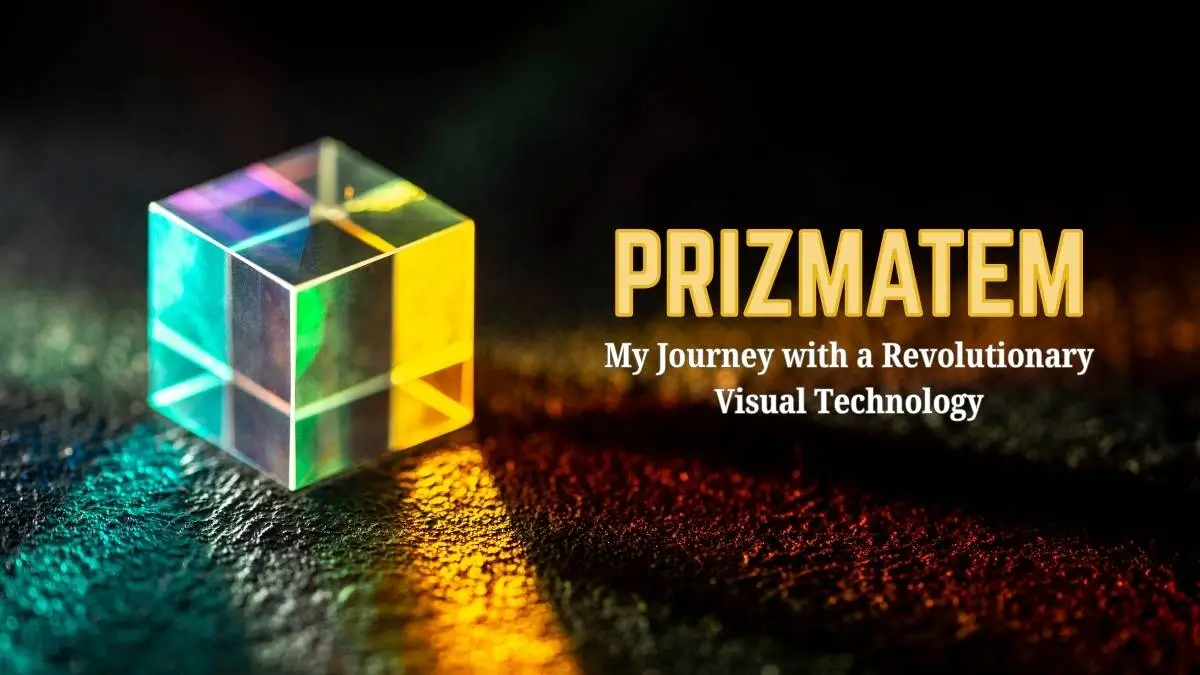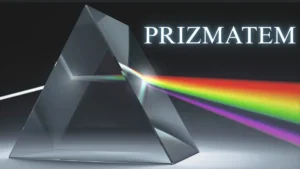TECHNOLOGY
Prizmatem: My Journey with a Revolutionary Visual Technology

Prizmatem merges physics, computational design, and artistry to reshape light with precision, offering unparalleled clarity, immersive experiences, and transformative applications across art, science, and design.
Introduction
When I first encountered Prizmatem, it wasn’t just the name that intrigued me; it was the sheer promise of a paradigm shift in how we interact with light and color. What started as a curiosity in a research workshop quickly became an evolving journey where traditional optical limitations no longer applied.
Unlike conventional optical devices, which simply bend or refract light, Prizmatem acts as a digital prism, allowing me to manipulate light and color in real time. It’s not just a tool; it’s an immersive experience that reshapes how we perceive visual environments.
Discovering Prizmatem
My first hands-on experience with digital prism was during a design workshop. Initially, I assumed it was another optical enhancement tool, just another way to tweak visuals. However, the moment I witnessed a projected image reshaping itself in real-time, colors bending, deepening, and shifting with a fluid precision, I knew this was something revolutionary.
The clarity of the visuals surpassed anything I had encountered before. Traditional projection systems, which often introduced distortions, could never replicate this level of optical purity. I could see the finest details, from the delicate texture of digital brushstrokes to the subtle shifts in light and shadow.
The Science Behind the Technology
Understanding Prizmatem’s foundation required delving into its scientific and computational framework. Powered by a combination of wave-based physics and algorithmic control, it manipulates light waves digitally in real time, creating dynamic changes in color and form.
Unlike traditional prisms that rely on physical properties to bend light, digital prism uses advanced computational models to recalibrate color representation instantly. Here’s a breakdown of how this works:
- Wave-Based Physics: Ensures optical purity by manipulating light at its core, providing a distortion-free visual experience.
- Computational Design Models: Continuously recalibrate color and form, enabling dynamic alterations of visual elements.
- Real-Time Digital Enhancement: Enables interactive adjustments that respond to user input, providing a fluid, immersive experience.
Prizmatem in Creative Spaces: Pushing Boundaries
As a creative professional, I started exploring how Prizmatem could enhance my artistic work. My first experiment was a digital artwork where colors shifted dynamically based on user interaction. This wasn’t a simple animation; it was an evolving visual experience. The more people engaged with the artwork, the more the colors would shift and transform. It felt as though the art was alive, responding to their presence in a way traditional visuals never could.
Later, I began integrating Prizmatem into immersive installations. Imagine entering a room where the walls adjust in real-time, shaping light and shadow based on your movements.
Prizmatem’s Practical Applications
While my primary focus has been in the arts, I quickly realized that Prizmatem’s potential stretches far beyond creative fields. During my journey, I witnessed its use in several industries, which expanded my understanding of its applications:
- Medical Imaging: In medical fields, digital prism enhances microscopic visualizations, offering clarity and detail far beyond the capabilities of traditional imaging systems.
- Education: In classrooms, digital prism is used to bring complex concepts like physics and art to life, providing students with interactive, immersive learning tools.
- Architecture: Architects use digital prism to simulate how natural light interacts with materials, allowing them to preview environmental impacts before construction begins.
These examples underscore how digital prism is revolutionizing not just art, but fields that require high levels of optical precision and real-time interactivity.

Why Prizmatem Feels Different
What makes Prizmatem stand out to me is the sense of control it offers. With traditional optical tools, I was always constrained by physical limitations, whether that was the fixed properties of glass in a prism or the limited color range of a standard projector. Prizmatem breaks down these barriers, offering:
- Precision: Every adjustment is deliberate and scientifically grounded, offering unmatched control over light and color.
- Immersion: I often lose myself in the visuals because the colors feel alive—responding and shifting in real-time, creating a deep sense of engagement.
- Scalability: Whether I’m working on a small digital sketch or a large-scale immersive installation, Prizmatem adapts seamlessly, allowing me to scale my projects effortlessly.
Challenges I Encountered
Of course, my journey with Prizmatem wasn’t without challenges. One of the biggest hurdles was adapting my creative process. Unlike traditional design tools, digital prism demands real-time decision-making. At first, I felt overwhelmed by the sheer possibilities.
There were also technical limitations, such as learning the computational design interface and calibrating environments. I spent weeks just experimenting with settings before I could confidently integrate it into my workflow.
Ethical and Cultural Reflections
It also raised important questions for me. As visuals become more immersive and manipulable, how do we ensure authenticity? Could such technologies distort perception in harmful ways?
In artistic settings, I found this liberating; I could bend perception to tell new stories. But I also recognized that in media or education, maintaining trust and transparency is crucial. This aligns with broader discussions in technology ethics, reminding me that revolutionary tools always come with responsibility.
FAQs
Q1: How does Prizmatem differ from traditional optical tools?
It leverages computational design and real-time digital enhancement to manipulate light dynamically, unlike traditional tools that rely on physical refraction or static color representations.
Q2: Can Prizmatem be applied in fields other than art?
Absolutely. It has applications in medical imaging, architecture, education, and scientific visualization, where optical clarity and real-time adjustments are crucial.
Q3: Is Prizmatem beginner-friendly?
While the technology has a learning curve, its user interface is designed to support both professionals and creative enthusiasts. My journey with it began through hands-on experimentation and learning.
Conclusion
Prizmatem isn’t just another optical tool; it’s a game-changer. It represents a new relationship with light, one that goes beyond mere clarity or precision. It’s about reshaping how we see, how we interact with the world around us, and how we use technology to connect, inform, and inspire.
Whether I’m designing, teaching, or simply observing, it has transformed my understanding of visual creation. It has given me the ability to reframe, reinterpret, and immerse myself in a world of light and color like never before.
-

 BIOGRAPHY7 months ago
BIOGRAPHY7 months agoBehind the Scenes with Sandra Orlow: An Exclusive Interview
-

 HOME1 year ago
HOME1 year agoDiscovering Insights: A Deep Dive into the //vital-mag.net blog
-

 HOME1 year ago
HOME1 year agoSifangds in Action: Real-Life Applications and Success Stories
-

 BIOGRAPHY1 year ago
BIOGRAPHY1 year agoThe Woman Behind the Comedian: Meet Andrew Santino Wife




























